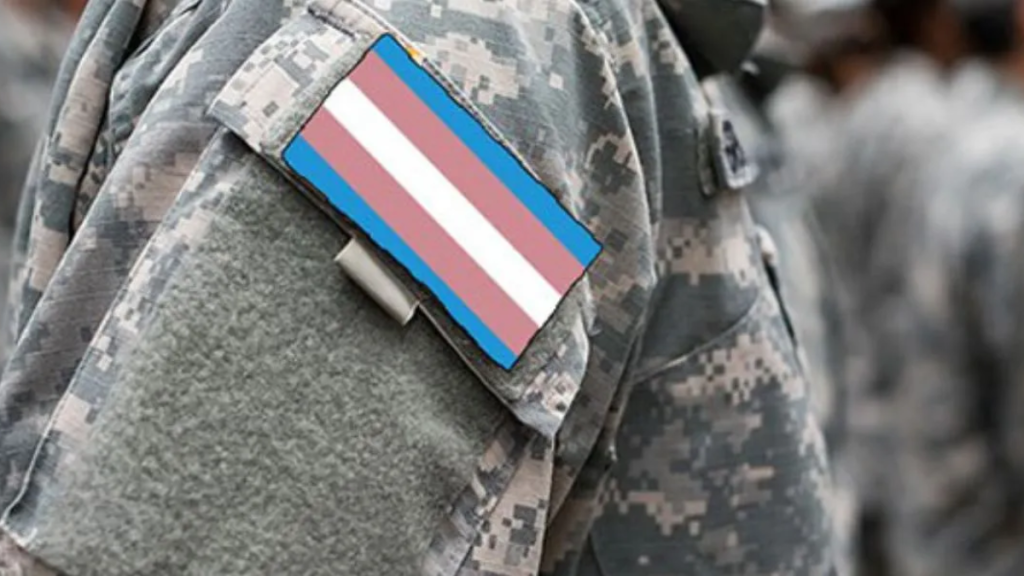An internal memo circulating within the Department of Defense suggests that the United States military will begin discharging transgender service members starting next month. The document, obtained by multiple media outlets, outlines preparations for the reinstatement of a policy banning transgender individuals from serving openly in the military.
According to the memo, military officials have been instructed to identify active-duty service members who are transgender and begin initiating formal discharge proceedings in July. This decision follows months of internal review and marks a significant shift in military policy regarding LGBTQ+ rights.
The move comes amid political and legal debates about the status of transgender individuals in the armed forces. It also raises new questions about the future of inclusivity and equality within the U.S. military ranks.
Pentagon Cites “Operational Readiness” in Policy Justification
Defense officials have stated that the policy is being reinstated to ensure “unit cohesion” and “military readiness,” echoing language used in previous administrations to justify similar bans.
“The Department of Defense must be prepared to implement personnel policies that prioritize mission effectiveness,” the memo states. “The presence of transgender individuals is determined to be incompatible with sustained readiness.”
Critics argue that this justification is not supported by evidence. Multiple studies, including a 2016 RAND Corporation report commissioned by the Pentagon, found that allowing transgender individuals to serve had minimal impact on readiness or unit performance. The report also noted that the costs associated with gender-affirming healthcare were negligible.
Backlash from Advocacy Groups and Lawmakers
LGBTQ+ advocacy organizations have condemned the policy shift, calling it discriminatory and dangerous. The Human Rights Campaign issued a statement calling the decision “a betrayal of honor and sacrifice.”
“Transgender troops have served with distinction and continue to put their lives on the line for this country,” said HRC President Kelley Robinson. “To reward their service with discharge is a cruel and calculated act of exclusion.”
Prominent lawmakers have also voiced opposition. Senator Tammy Baldwin (D-WI), the first openly gay U.S. senator, called the policy “a step backward for military equality.” Meanwhile, Republican supporters of the decision argue it restores a focus on traditional military values.
Legal Challenges Likely to Follow
The upcoming policy is expected to face legal challenges from civil rights organizations and possibly from affected service members themselves. Legal experts point to potential violations of equal protection clauses under the U.S. Constitution, as well as Department of Defense regulations regarding fair treatment.
In previous years, federal courts have blocked efforts to remove transgender troops, particularly during the Trump administration. However, the legal landscape has shifted, and the outcome of new lawsuits may depend on how the policy is implemented and the specific language used in discharge proceedings.
According to Lambda Legal, a national legal organization focused on LGBTQ+ rights, lawsuits are already being prepared to challenge the memo’s contents and halt implementation of the ban.
For more details about past rulings and potential legal responses, visit Lambda Legal.

Military Leadership Remains Divided on Implementation
Sources inside the Pentagon say that military leaders across branches are divided on how to proceed with the new directive. While some senior officials are preparing for implementation, others are reportedly seeking clarity or even considering quiet resistance through slow or limited enforcement.
One Army official who spoke on condition of anonymity said, “This is not a decision that reflects the views of many commanders who have seen firsthand the courage and capability of transgender troops.”
As of now, it remains unclear how many transgender service members will be affected. Estimates vary, but recent figures from the Palm Center suggest there are over 13,000 openly transgender individuals currently serving in the military, many of whom have received commendations and achieved leadership roles.
Public Opinion and Future Policy Prospects
Public support for transgender troops has grown steadily in recent years. A 2023 Pew Research poll found that 64% of Americans believe transgender individuals should be allowed to serve in the military. This marks a sharp increase from just a decade ago, when the issue was more divisive.
With the 2024 presidential election approaching, the future of the policy may ultimately depend on which party controls the executive branch and Congress.
Democratic leaders have pledged to reverse the ban if they regain control, while many Republicans support the decision as a return to military tradition.
In the meantime, transgender troops and their allies are preparing for what may be one of the most consequential personnel shifts in the U.S. military in years.
Conclusion
The Pentagon’s internal memo outlining plans to discharge transgender troops next month has sparked widespread concern, debate, and potential legal action.
As the military begins preparing for this controversial policy shift, the lives and careers of thousands of dedicated service members hang in the balance.
Advocates continue to push back against what they see as a discriminatory and unjust move, while legal teams are preparing to defend the rights of transgender individuals who have bravely served their country.
With political, legal, and social implications still unfolding, the coming weeks will be pivotal for the future of transgender rights in the U.S. military.
For ongoing updates and legal resources, visit National Center for Transgender Equality.
Disclaimer – Our team has carefully fact-checked this article to make sure it’s accurate and free from any misinformation. We’re dedicated to keeping our content honest and reliable for our readers.
